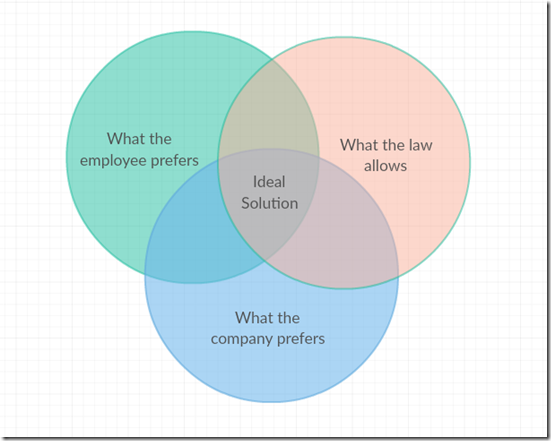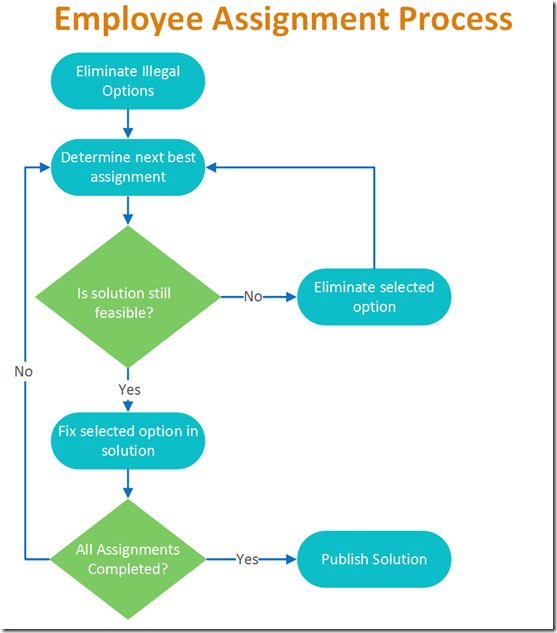Tag: decision
Building AI Solutions with Google OR-Tools
Posted by bsstahl on 2017-09-28 and Filed Under: development
My presentation from the #NDCSydney conference has been published on YouTube.
We depend on Artificial Intelligences to solve many types of problems for us. Some of these problems have more than one possible solution. Handling those problems with more than one solution while building a modern AI system is something every developer will be asked to do over the course of his or her career. Figuring out the best way to utilize the capacity of a device or machine, finding the shortest path between two points, or determining the best way to schedule people or events are all problems where mathematical optimization techniques and tooling can be used to quickly and efficiently find solutions.
This session is a software developers introduction to using mathematical optimization in Artificial Intelligence. In it, we will explore some of the foundational techniques for solving these types of problems, and use the open-source Google OR-Tools to put them to work in our AI systems. Since this is a session for developers, we'll keep it in terms that work best for us. That is, we'll go heavy on the code and lighter on the math.
Tags: ai algorithms code sample community conference decision development presentation professional development speaking
A Developer’s Survey of AI Techniques
Posted by bsstahl on 2017-06-22 and Filed Under: event
The slide deck for my talk “A Developer’s Survey of AI Techniques” can be found here, while the demo code can be found on GitHub.
The talk explores some of the different techniques used to create Artificial Intelligences using the example of a Chutes & Ladders game. Various AIs are developed using different strategies for playing a variant of the game, using different techniques for deciding where on the game board to move.
If you would like me to deliver this talk, or any of my talks, at your User Group or Conference, please contact me.
Tags: ai code sample community decision development presentation professional development slides speaking user group
A Requirement for AI Systems
Posted by bsstahl on 2017-05-24 and Filed Under: development
I've written and spoken before about the importance of using the Strategy Pattern to create maintainable and testable systems. Strategies are even more important, almost to the level of necessity, when building AI systems.
The Strategy Pattern is to algorithms what the Repository Pattern is to data stores, a useful and well-known abstraction for loose-coupling. — Barry Stahl (@bsstahl) January 6, 2017
The Strategy Pattern is an abstraction tool used to maintain loose-coupling between an application and the algorithm(s) that it uses to do its job. Since the algorithms used in AI systems have many different ways they could be implemented, it is important to abstract the implementation from the system that uses it. I tend to work with systems that use combinatorial optimization methods to solve their problems, but there are many ways for AIs to make decisions. Machine Learning is one of the hottest methods right now but AI systems can also depend on tried-and-true object-oriented logic. The ability to swap algorithms without changing the underlying system allows us the flexibility to try multiple methods before settling on a specific implementation, or even to switch-out implementations as scenarios or situations change.
When I give conference talks on building AI Systems using optimization methods, I always encourage the attendees to create a "naïve" solution first, before spending a lot of effort to build complicated logic. This allows the developer to understand the problem better than he or she did before doing any implementation. Creating this initial solution has another advantage though, it allows us to define the Strategy interface, giving us a better picture of what our application truly needs. Then, when we set-out to build a production-worthy engine, we do so with the knowledge of exactly what we need to produce.
There is also another component of many AIs that can benefit from the use of the Strategy pattern, and that is the determination of user intent. Many implementations of AI will include a user interaction, perhaps through a text-based interface as in a chatbot or a voice interface such as a personal assistant. Each cloud provider has their own set of services designed to determine the intent of the user based on the text or voice input. Each of these implementations has its own strengths and weaknesses. It is beneficial to be able to swap those mechanisms out at will, along with the ability to implement a "naïve" user intent solution during development, and the ability to mock user intent for testing. The strategy pattern is the right tool for this job as well.
As more and more of our applications depend heavily on algorithms, we will need to make a concerted effort to abstract those algorithms away from our applications to maintain loose-coupling and all of the benefits that loose-coupling provides. This is why I consider the Strategy Pattern to be a necessity when developing Artificial Intelligence solutions.
Tags: abstraction algorithms ai cloud coding-practices decision interface pattern testing unit testing
A.I. That Can Explain "Why"
Posted by bsstahl on 2016-12-15 and Filed Under: development
One of my favorite authors among Software Architects, IBM Fellow Grady Booch, made this reference to AlphaGo, IBM’s program built to play the board game Go, in April of 2016:
"...there are things neural networks can't easily do and likely never will. AlphaGo can't reason about why it made a particular move." – Grady Booch
Grady went on to refer to the concept of “Hybrid A.I.” as a means of developing systems that can make complex decisions requiring the processing of huge datasets, while still being able to explain the rationale behind those decisions.
While not exactly the type of system Grady was describing, it reminded me of a solution I was involved with creating that ultimately became a hybrid of an iterative, imperative system and a combinatorial optimization engine. The resulting solution was able to both determine the optimum solution for a problem with significant data requirements, while still being able to provide information to support the decision, both to prove it was correct, and to help the users learn how to best use it.
The problem looked something like this:

There are many possible ways to allocate work assignments among employees. Some of those allocations would not be legal, perhaps because the employee is not qualified for that assignment, or because of time limits on how much he or she can work. Other options may be legal, but are not ideal. The assignment may be sub-optimal for the employee who may have a schedule conflict or other preference against that particular assignment, or for the company which may not be able to easily fill the assignment with anyone else.
The complexity in this problem comes from the fact that this diagram is different for each employee to be assigned. Each employee has their own set of preferences and legalities, and the preferences of the company are probably different for each employee. It is likely that many employees will not be able to get an assignment that falls into the “Ideal Solution” area of the drawing. If there were just a few employees and a supervisor was making these decisions, that person would have to explain his or her rationale to the employees who did not get the assignments they wanted, or to the bosses if company requirements could not be met. If an optimization solution made the decisions purely on the basis of a mathematical model, we could be guaranteed the best solution based on our criteria, but would have no way to explain how one person got an assignment that another wanted, or why company preferences were ignored in any individual case.
The resulting hybrid approach started by eliminating illegal options, and then looking at the most important detail and assigning the best fit for that detail to the solution set. That is, if the most important feature to the model was the wishes of the most senior employee, that employee’s request would be added to the solution. The optimization engine would then be run to be sure that a feasible solution was still available. As long as an answer could still be found that didn’t violate any of the hard constraints, the selection was fixed in the solution and the next employee’s wishes addressed. If a feasible solution could not be found using the selected option, that selection would be recorded along with the result of the optimization and the state of the model at the time of processing. This allows the reasoning behind each decision to be exposed to the users.
A very simplified diagram of the process is shown below.

Each time the green diamond testing “Is the solution still feasible?” is hit, the optimization model is run to verify that a solution can be found. It is this hybrid process, the iterative execution of a combinatorial solution engine, that gives this tool its ability to both answer the question of how to do things, while also being able to answer the question of why it needs to be done this way.
Like Grady, I expect we will see many more examples of these types of hybrids in the very near future.